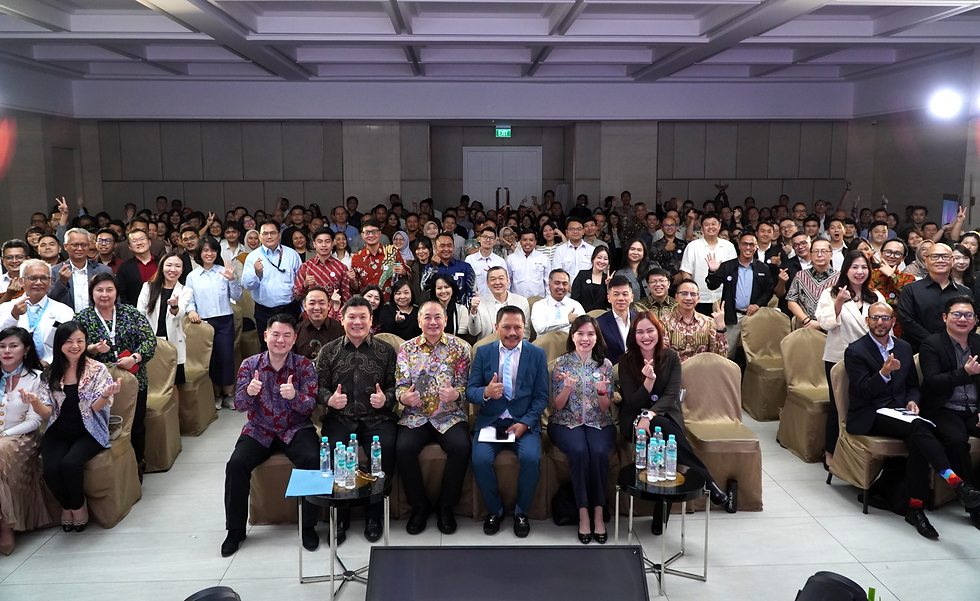Tech Talent : How to Attract Top Tech Talent to Your Company
- TechConnect

- Jun 15, 2023
- 3 min read

Picture Source : Investment Monitor
The war for technology talent is getting fiercer. It’s no longer just tech companies competing against one another for candidates; other industries have jumped into the fray and are winning a larger share of tech talent. Even as demand from non-tech companies grows, many companies are struggling to compete for top talent because the largest technology companies and tech start-ups are sucking up top-flight candidates at unprecedented rates. To attract their desired candidates, leading companies don’t just implement measures that job seekers now consider table stakes, such as a strong company mission and purpose, competitive pay and benefits packages, and a track record of investing in training and career path opportunities.
Here are five factors that are identified to determine where the most talented candidates want to work:
1. Commitment to diversity and inclusion
Hiring a diverse and inclusive workforce is the right thing to do and its positive impact on company performance is well documented. Additionally, a strong Diversity, Equality, and Inclusion (DEI) strategy has become a key factor in hiring decisions, helping companies to attract talent. The good news is that opening recruiting channels beyond your typical recruiting sources can also help here. Objective tests of skills and competencies have also been shown to increase diversity rather than relying on prior experience and qualifications.
2. Transparent and accountable senior management
At high-performing technology companies, managers are typically prominent and willing to engage directly with employees. We act quickly and decisively and take responsibility for actual results. For example, Slack, a maker of business communication and collaboration software, created his internal chat channel #exec-ama (“Ask me anything”). Employees can ask management anything, and leaders are expected (and will) answer. Of course, top talent prefer companies where they feel their work makes a big impact. When employees feel that leadership is uncompromising and irresponsible, they are more likely to leave the company to found a rival company.
3. Culture of coaching and development
The path to creating a winning culture can seem opaque, but one clear enabler is high-quality coaching and development of employees. Millennial and Gen Z workers tend to value this kind of investment, but it’s also critical to “growing” talented employees who have the right capabilities, but not necessarily the experience. This effort also reinforces inclusion by providing real sponsorship of employees with diverse backgrounds. Earning a reputation for excellence across all these areas won’t happen overnight. But the payoff is a high-caliber, diverse workforce hungry to help the company succeed in the new tech-enabled economy.
4. Focus on developer happiness, and productivity & performance will follow
Retaining top talent requires an environment in which developers are treated as innovators, not coders, and actively participate in the business. Business leaders can turn this situation around by making the quality of the developer experience the primary measure of success and using data to closely track job satisfaction. For example, Microsoft looked at calendar data (among other sources) to show that meeting-related management practices in the company's equipment division were reducing engineer job satisfaction. One of the most important metrics is the number of developers who employ other developers. This is to show how strongly employees believe in the company and its vision. Therefore, the referral program should be transparent and efficient.
5. Think candidate experiences, not recruiting process
To improve hiring, HR departments and hiring managers typically focus on improving the hiring process and introducing efficiencies. A more effective approach is to "think like a new employee" and focus on the candidate's experience. This includes improving the experience of virtual candidates, with 70% of them in a recent survey saying at least half of their hiring and onboarding was done virtually. Here are some ways to achieve this:
Engineers want to meet other engineers. So make sure engineers and other relevant roles are part of your interview team. Bring top talent to interviews, online events, and conferences.
Good candidates are ambitious and have many opportunities. Develop an interview and assessment approach that leads to a decision in just one day. Use tools like HackerRank to assess skills before a candidate walks through your door.
Tech talents participate not only in job sites, but also in non-traditional channels such as hackathons, open source channels, and websites curated specifically for different skills.
Top talent wants to start now. So, when new hires start working, make sure you have an onboarding officer to help them navigate their way through the company. The onboarding process should be streamlined so that developers can commit code by the end of the first week.
Source : HBR, McKinsey, Forbes





Comments